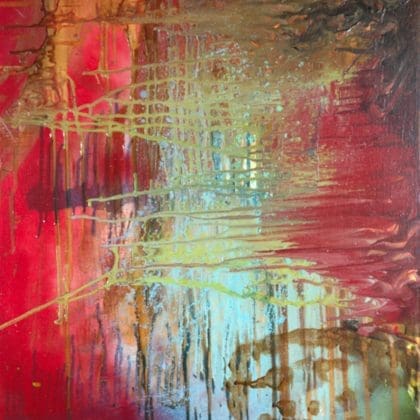The way you light your art can dramatically influence how it is perceived and appreciated in your home. Proper lighting not only highlights the details and colors of your artworks but also creates an ambiance that enhances your living space. As a collector, understanding how to effectively illuminate your art can elevate its visual impact and ensure it stands out as the centerpiece of your decor.
In this article, we’ll explore different lighting techniques, types of fixtures, and tips to help you showcase your art beautifully.
1. The Importance of Art Lighting
Lighting is an essential element in showcasing art. The right lighting can transform a piece, bringing it to life and creating an emotional connection with viewers.
Key Benefits of Proper Lighting:
Enhances Colors: Good lighting accentuates the colors in your artwork, making them more vibrant and visually appealing.
Highlights Textures: Proper illumination can emphasize the texture and details in the artwork, adding depth and interest.
Creates Atmosphere: Well-placed lighting can set the mood of a room, drawing attention to your art and enhancing the overall aesthetic.
2. Types of Lighting for Art
Choosing the right type of lighting is crucial for effectively illuminating your artwork. Here are some popular options to consider:
A. Natural Light
Advantages: Natural light can enhance colors and textures while providing a soft, inviting glow.
Considerations: Be mindful of the potential for fading and damage from prolonged exposure to sunlight. Use UV-filtering glass and place art away from direct sunlight.
B. Track Lighting
Advantages: Track lighting offers flexibility, allowing you to direct light onto specific pieces of art.
Considerations: Use adjustable fixtures to create a spotlight effect on your artwork. Choose LED bulbs to reduce heat and energy consumption.
C. Picture Lights
Advantages: Picture lights are designed specifically for illuminating framed artworks and can be installed directly above or below the piece.
Considerations: Ensure that the light is angled correctly to avoid glare. Adjustable models allow for greater versatility in lighting angles.
D. Wall Sconces
Advantages: Wall sconces can provide indirect lighting that enhances the overall atmosphere while highlighting nearby artwork.
Considerations: Choose dimmable sconces to adjust the lighting level based on the time of day or desired mood.
E. LED Strip Lights
Advantages: LED strip lights can be placed along the edges of frames or shelves to create a contemporary, sleek look.
Considerations: Opt for warm white LED lights to avoid a harsh, sterile appearance and create a cozy ambiance.
3. Tips for Effective Art Lighting
To maximize the visual impact of your artwork, consider these practical tips for effective lighting:
A. Consider the Height
Eye Level: Position lights to shine on art hung at eye level for optimal viewing. Generally, this is about 57 to 60 inches from the floor.
Angle It Right: Adjust the angle of your light source to avoid glare and ensure an even spread of light across the piece.
B. Use Multiple Light Sources
Layered Lighting: Combine different types of lighting to create a well-rounded effect. Use ambient, task, and accent lighting together for the best results.
Balance: Ensure that the light on your artwork is balanced with the overall room lighting to avoid stark contrasts.
C. Experiment with Color Temperature
Warm vs. Cool: Different bulbs have varying color temperatures. Warmer tones (2700K–3000K) create a cozy feel, while cooler tones (3500K–5000K) can highlight detail. Experiment to find what works best for your collection.
Consider the Art: Different artworks may respond better to different temperatures. For example, paintings with rich, warm colors may benefit from warmer lighting.
D. Keep Maintenance in Mind
Light Bulb Replacement: Choose LED bulbs that have a long lifespan to minimize maintenance. Consider dimmable options for greater control over brightness.
Dust Regularly: Ensure that your light fixtures and the art itself are kept clean to maintain optimal lighting conditions.
4. Showcasing Different Art Styles
The style of your artwork can influence the type of lighting that works best. Here are some examples:
Abstract Art: Use bold, focused lighting to draw attention to color and form.
Landscape or Nature Art: Natural light can enhance the colors and create a serene ambiance, but complement it with indirect lighting to highlight details.
Sculptures: Use spotlights to create dramatic shadows and highlight the contours of the piece.
Conclusion: Take Action to Illuminate Your Art
Lighting your art effectively can significantly enhance its visual impact and create a captivating atmosphere in your home. By understanding the importance of lighting, exploring different types of fixtures, and following practical tips, you can showcase your collection in the best possible way.
Now it’s time to act: Assess the lighting in your home and consider how you can enhance it for your art. Experiment with different types of lighting and placement, and don’t hesitate to adjust your setup until you find what works best. Your artwork deserves to shine, so take the steps needed to create an inviting and visually stunning display that reflects your unique style and passion for collecting!




